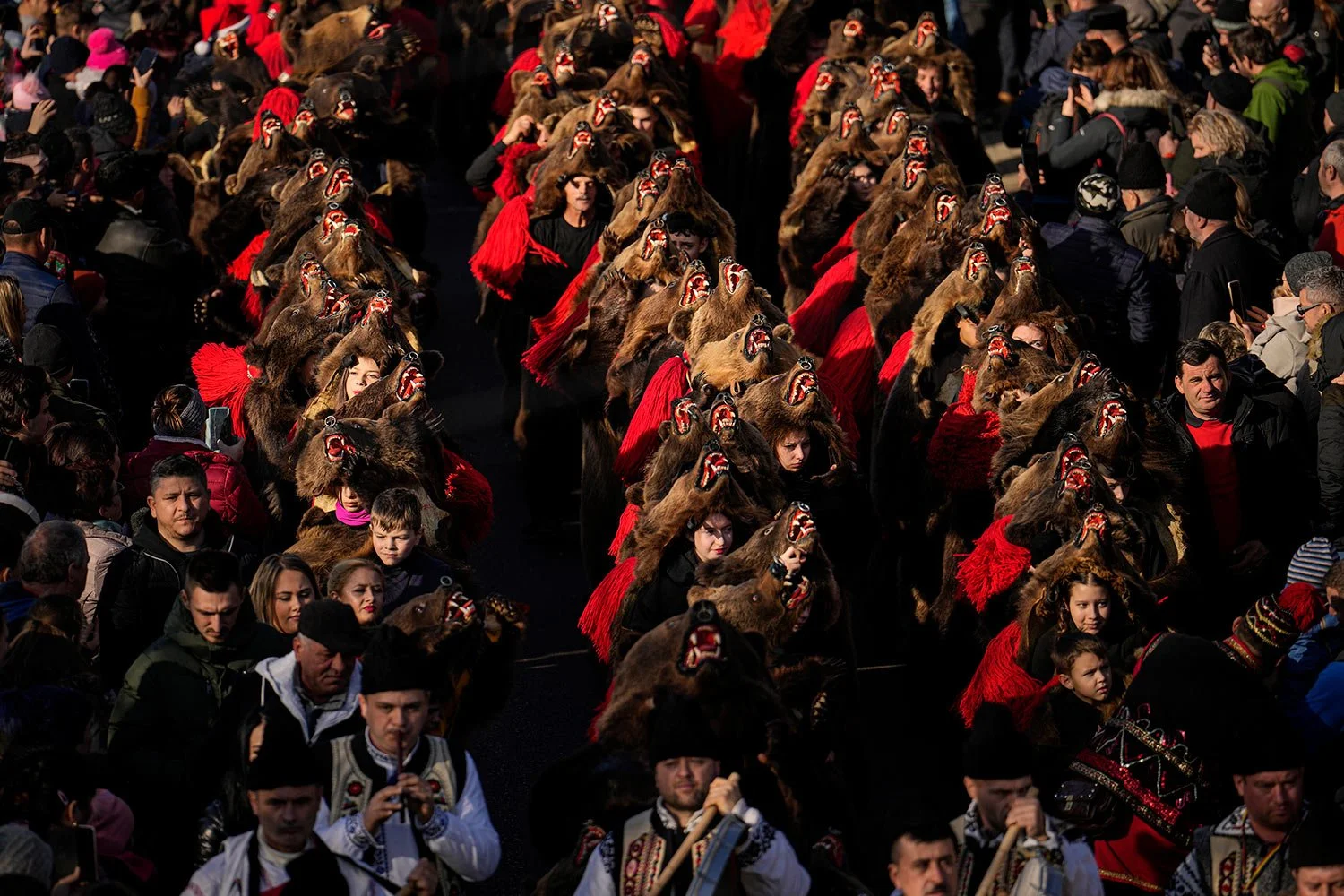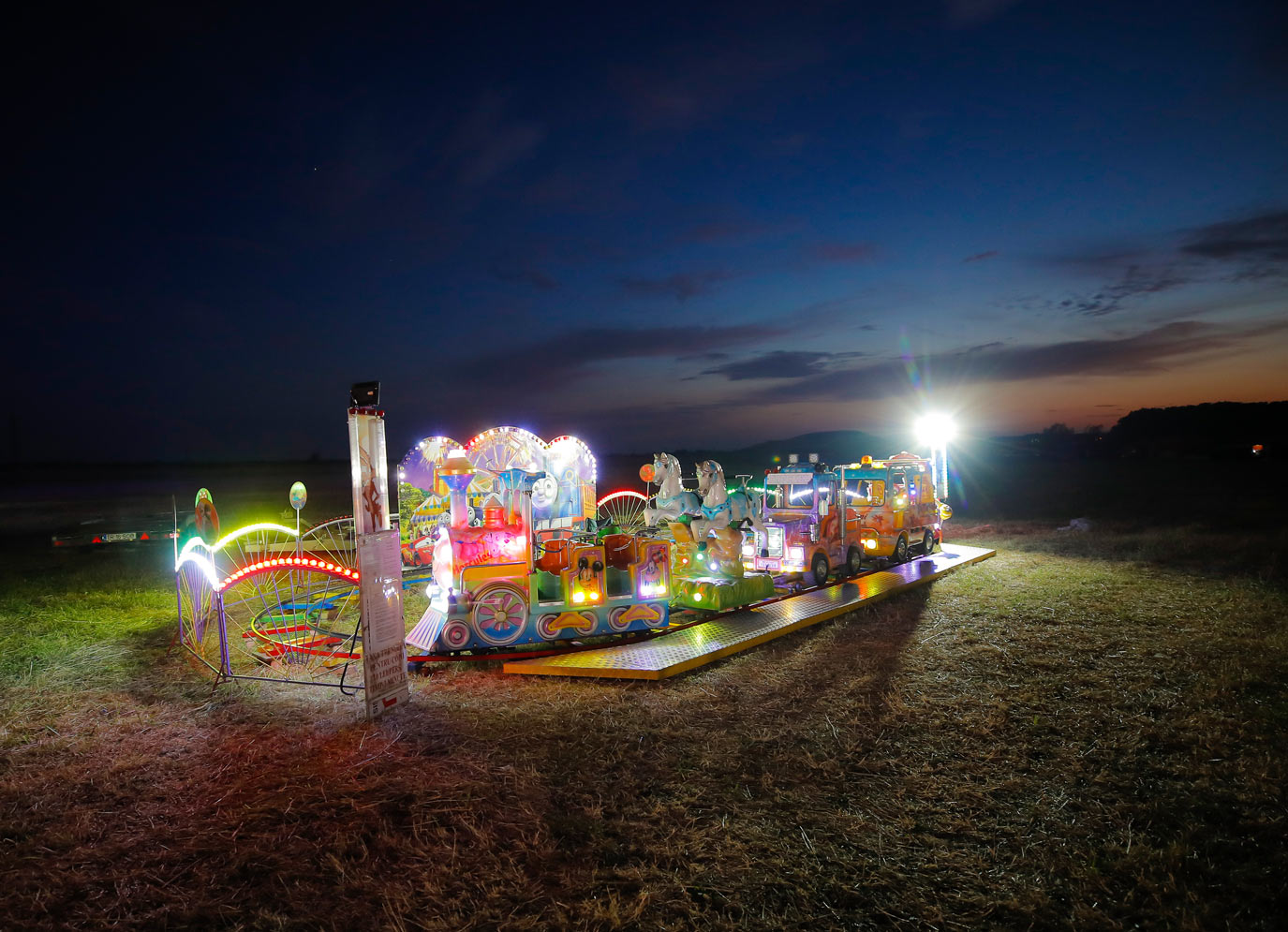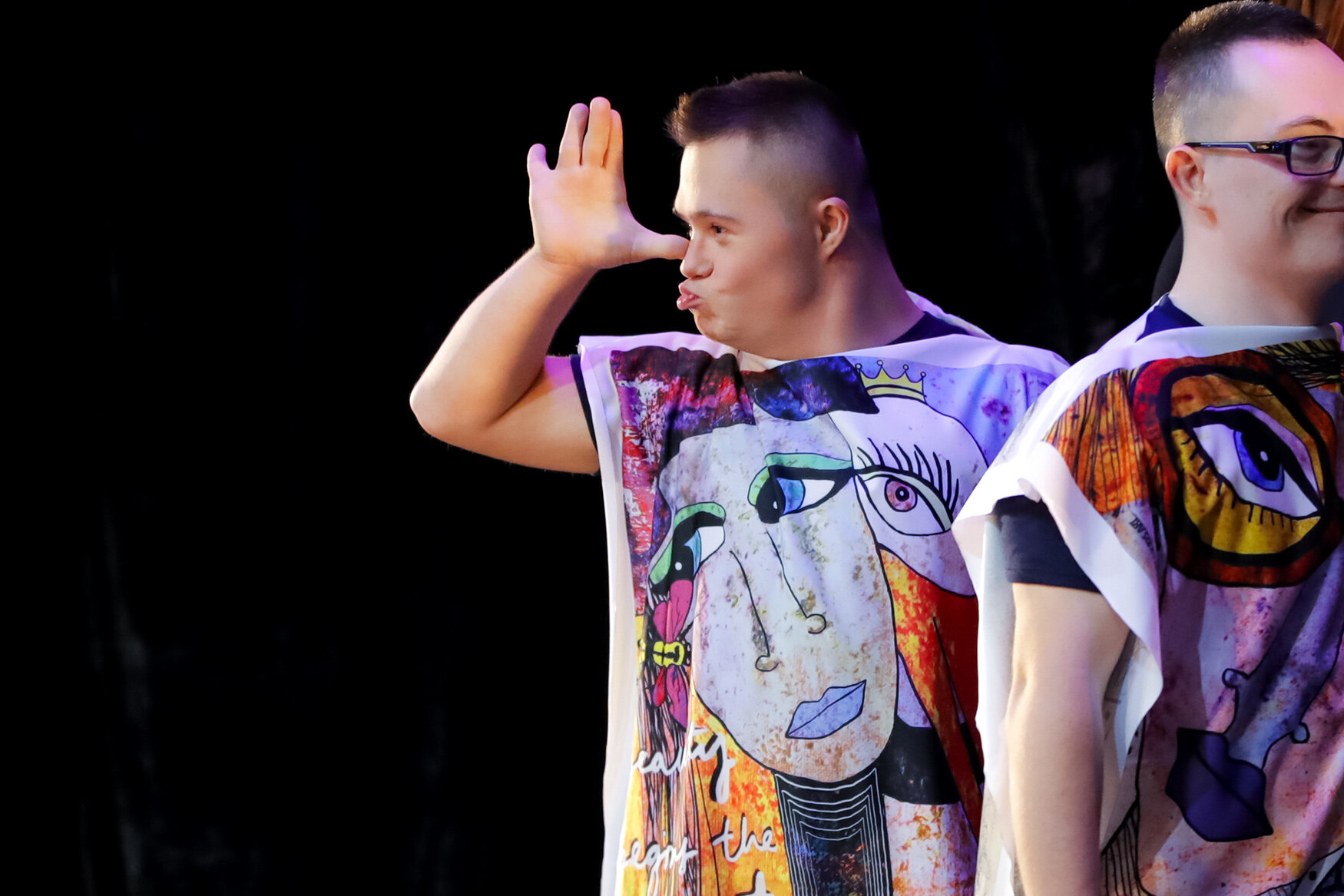Bear costumes, dance at popular Romanian festival

Centuries ago, people in what is now northeastern Romania would don bear fur and dance to fend off evil spirits. Nowadays, the custom lives on as a popular festival that has been drawing crowds of tourists.
The so-called ‘dancing bears festival’ takes place every December, starting in the days before Christmas and ending with New Year's Eve.
Hundreds of bear-costumed people of all ages roam villages and towns while dancing to the deafening sound of drums. The festival has done wonders for local tourism but has triggered criticism from animal rights groups over the use of real bear skins.
Locals say that the custom dates back to the pre-Christianity era when it was believed that wild animals guarded people from misfortune or danger. Dancing bears, therefore, went to people's homes and knocked on their doors for luck and a happy new year.
A boy wearing a bear fur costume waits for the start of a parade showcasing regional winter traditions in Comanesti, northeastern Romania, Friday, Dec. 30, 2022. (AP Photo/Andreea Alexandru)
Girls help each other stand up dressed in heavy bear fur costumes as they prepare to take part in a parade showcasing regional winter traditions in Comanesti, northeastern Romania, Friday, Dec. 30, 2022. (AP Photo/Vadim Ghirda)
A boy looks at a mobile phone while waiting, dressed in a bear fur costume, to take part in a parade showcasing regional winter traditions in Comanesti, northeastern Romania, Friday, Dec. 30, 2022. (AP Photo/Vadim Ghirda)
A child wearing a bear fur costume dances during a parade showcasing winter traditions from the northeast of the country in Bucharest, Romania, Sunday, Dec. 18, 2022. (AP Photo/Andreea Alexandru)
Brown bears are widely present in Romania’s tradition and culture, and often can be seen by mountain roads and in forests. Excessive bear hunting prompted the authorities to issue a ban in 2016, except when the numbers grow too big or in case of illness.
The festival highlight falls on Dec. 30, when hundreds of bear-clad people — some 30 bands from all over the region — descend on the regional center of Comanesti for the finale of the street festivities.
Residents are happy that the tradition has lived on since many people left the region in 1990s looking for jobs in Western Europe after the fall of Communism.
Visitors come from as far away as Japan for the sight: rows and rows of gaping jaws and claws marching and dancing. Giant, red pom-pom decorations are added to the furs to give them the look of a marching band.
A policeman stops vehicles for people wearing bear fur costumes to cross a street during a parade showcasing winter traditions from the northeast of the country in Bucharest, Romania, Sunday, Dec. 18, 2022. AP Photo/Vadim Ghirda)
A girl wearing a bear fur costume waits before participating in a parade showcasing winter traditions from the northeast of the country in Bucharest, Romania, Sunday, Dec. 18, 2022. (AP Photo/Vadim Ghirda)
People wearing communist-era military uniforms decorated with colorful items participate in a parade showcasing winter traditions from the northeast of the country in Bucharest, Romania, on Sunday, Dec. 18, 2022. (AP Photo/Vadim Ghirda)
People wearing communist-era military uniforms, decorated with colorful items, take part in a parade showcasing winter traditions from the northeast of the country in Bucharest, Romania, Sunday, Dec. 18, 2022. (AP Photo/Andreea Alexandru)
A man wearing a bear fur costume walks during a parade showcasing regional winter traditions in Comanesti, northeastern Romania, Friday, Dec. 30, 2022. (AP Photo/Vadim Ghirda)
Some of the ‘bears’ jokingly growl or mock an attack on onlookers. More festival-goers, wearing glittering drummers' costumes or tweaked Communist-era military outfits, also routinely join in.
Wearing a full-sized bear fur isn't easy — with both the head and claws included, the fur could weigh up to 50 kilograms (110 pounds). And, the price might exceed 2,000 euros ($2,100), according to local media.
Animal rights groups have expressed concern that the festival fuels bear hunting for costumes. Participants defend the event, saying that most of the furs have been preserved for generations and treated with great care.
Another local tradition in Romania, the forcing taming of bears in captivity to dance for audiences, was curbed decades ago to halt animal abuse.
A man wears a bear fur costume while taking part in a parade showcasing winter traditions from the northeast of the country in Bucharest, Romania, Sunday, Dec. 18, 2022. (AP Photo/Andreea Alexandru)
A man holds a toddler wearing a bear fur costume during a parade showcasing regional winter traditions in Comanesti, northeastern Romania, Friday, Dec. 30, 2022. (AP Photo/Vadim Ghirda)
A little boy dances during a parade showcasing regional winter traditions in Comanesti, northeastern Romania, Friday, Dec. 30, 2022. (AP Photo/Vadim Ghirda)
A person wearing a bear fur costume dances during a parade showcasing winter traditions from the northeast of the country in Bucharest, Romania, Sunday, Dec. 18, 2022. (AP Photo/Andreea Alexandru)
Women watch from a window as people wearing bear fur costumes take part in a parade showcasing regional winter traditions in Comanesti, northeastern Romania, Friday, Dec. 30, 2022. (AP Photo/Vadim Ghirda)
People wearing bear fur costumes take part in a parade showcasing regional winter traditions in Comanesti, northeastern Romania, Friday, Dec. 30, 2022. (AP Photo/Vadim Ghirda)
A man wearing a bear fur costume waves to a little girl during a parade showcasing regional winter traditions in Comanesti, northeastern Romania, Friday, Dec. 30, 2022. (AP Photo/Vadim Ghirda)
A man wearing a bear fur costume looks at his mobile phone while waiting for his wurst order to be prepared after a parade showcasing winter traditions from the northeast of the country in Bucharest, Romania, Sunday, Dec. 18, 2022. (AP Photo/Vadim Ghirda)
A couple wearing bear fur costumes kiss before taking part in a parade showcasing winter traditions from the northeast of the country in Bucharest, Romania, Sunday, Dec. 18, 2022. (AP Photo/Vadim Ghirda)
A man wearing bear fur costume waits by railway tracks during a parade showcasing regional winter traditions in Comanesti, northeastern Romania, Friday, Dec. 30, 2022. (AP Photo/Vadim Ghirda)
Text from AP News story, AP PHOTOS: Bear costumes, dance at popular Romanian festival, by Vadim Ghirda and Andreea Alexandru
Photos by Vadim Ghirda and Andreea Alexandru






